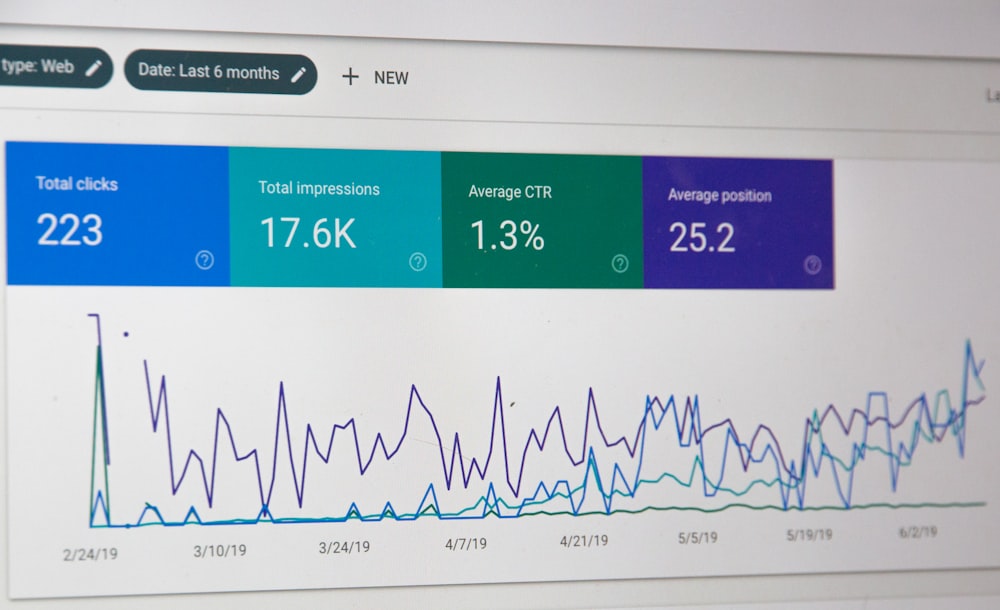Storytelling for nonprofits has become an essential tool to engage and connect with their audience. Through the power of visual storytelling, nonprofits can effectively communicate their mission, engage donors and volunteers, and make a lasting impact. Let’s get into the fundamentals of video storytelling, its role in nonprofits, how to create an impactful video story, and strategies to promote and measure its impact.
Here’s how we told some of Children’s Miracle Networks stories on our TikTok!
Understanding Video Storytelling for Nonprofits
Before diving into the world of video storytelling for nonprofits, it is important to understand the basics. Video storytelling is an art of conveying a narrative through visuals, sound, and emotions. It goes beyond simple marketing messages and generates an emotional connection with the audience. By creating compelling narratives, nonprofits can captivate viewers and inspire them to take action.
The Basics of Video Storytelling
At the core of every great video story lies a strong foundation. Firstly, nonprofits must define their target audience, identify the key message they want to convey and choose the most appropriate storytelling techniques and formats. From emotional testimonials to powerful documentaries, there are various approaches to storytelling that can resonate with different audiences.
One effective technique in video storytelling is the use of visual metaphors. These metaphors can help convey complex ideas or emotions in a simple and relatable way. For example, a nonprofit working to combat poverty might use a visual metaphor of a seed growing into a tree to represent the transformative power of their programs. This not only engages the audience visually but also adds depth and symbolism to the narrative.
TED Talk features all their Master Storytellers!
Why Video Storytelling is Effective for Nonprofits
Video storytelling is effective because it taps into the emotional side of our brains. It allows nonprofits to convey their values, showcase their impact, and create a personal connection with viewers. By evoking emotions, such as empathy, inspiration, or hope, nonprofits can encourage individuals to support their cause and become involved in their mission.
Furthermore, video storytelling has the power to break down barriers and foster understanding. It can bring to light the stories and experiences of marginalized communities, shining a spotlight on their struggles and triumphs. By giving a voice to those who are often unheard, nonprofits can raise awareness and drive positive change.
Another reason why video storytelling is effective is its ability to reach a wide audience. With the rise of social media and online platforms, videos can be easily shared and spread across different channels, reaching people from all walks of life. This accessibility allows nonprofits to amplify their message and engage with a larger community of supporters.
The Role of Video Storytelling for Nonprofits
Video storytelling plays a crucial role in communicating a nonprofit’s mission and engaging its audience. Let’s explore two key aspects:
Communicating Your Nonprofit’s Mission
One of the primary goals of video storytelling is to effectively communicate a nonprofit’s mission and values. Through authentic storytelling, nonprofits can share the stories of those they serve, highlight the impact of their work, and demonstrate their commitment to making a difference. By showcasing real people and their experiences, video storytelling helps nonprofits connect with their audience on a deeper level.
Imagine a video that takes you on a journey through the eyes of a young girl who has been given access to education through a nonprofit organization. As the video unfolds, you witness her transformation from a shy and uncertain child to a confident and empowered young woman. Through powerful visuals and emotional storytelling, the video captures the essence of the nonprofit’s mission, leaving a lasting impact on the viewer.
Engaging Donors and Volunteers
Video storytelling can be a powerful tool for nonprofits to engage their donors and volunteers. By sharing success stories and testimonials, nonprofits can show firsthand the difference their supporters make. This creates a sense of belonging and inspires individuals to contribute their time, skills, and financial resources.
Imagine a video that features a volunteer who has dedicated countless hours to a nonprofit’s cause. Through heartfelt interviews and footage of the volunteer in action, the video showcases the impact their contribution has had on the lives of those they have helped. This video not only acknowledges the volunteer’s efforts but also motivates others to get involved and make a difference.
Creating Your Nonprofit’s Video Story
Now that we understand the importance of video storytelling, let’s explore how nonprofits can create their own impactful video stories:
Planning Your Video Story
Effective video storytelling requires careful planning. Nonprofits should define their objectives, outline the key elements of their story, and create a storyboard that guides the production process. By planning ahead, nonprofits can ensure that their video story aligns with their mission and effectively communicates their message.
Essential Elements of a Powerful Video Story
A powerful video story consists of several essential elements. Firstly, nonprofits should focus on capturing authentic and relatable narratives that resonate with their target audience. Secondly, they should incorporate visuals, whether it’s footage, images, or animations, that enhance the emotional impact of the story. Additionally, music and narration can play a crucial role in setting the tone and evoking the desired emotions.
When it comes to capturing authentic and relatable narratives, nonprofits can consider conducting interviews with individuals who their work has directly impacted. These personal stories can create a deep connection with the audience, as they showcase the real-life experiences and challenges faced by those who have benefited from the nonprofit’s efforts. By highlighting these stories, nonprofits can humanize their cause and inspire viewers to take action.
Incorporating visuals is another important aspect of creating a powerful video story. Nonprofits can use compelling footage to show their work in action, whether it’s showcasing volunteers in the field, the impact of their programs on communities, or the success stories of individuals they have helped. Additionally, incorporating images or animations that visually represent the nonprofit’s mission and values can further enhance the storytelling experience.
Music and narration are powerful tools that can greatly enhance the emotional impact of a video story. Nonprofits should carefully select background music that complements the tone and message of their story, evoking the desired emotions in the audience. Whether it’s a heartfelt melody or an uplifting tune, the right music can create a powerful emotional connection. Furthermore, narration can provide additional context and guide the viewer through the story, helping them understand the significance of the nonprofit’s work and the impact it has on the lives of those it serves.
Promoting Your Video Story
Once a nonprofit has created a compelling video story, it’s essential to promote it effectively to reach the target audience. Here are some strategies to consider:
Utilizing Social Media Platforms
Social media platforms like TikTok, Reels, and Shorts have gained immense popularity, particularly among younger audiences. Nonprofits can leverage these platforms to share short-form video content that aligns with their mission and engages their target audience. By employing storytelling techniques and incorporating calls to action, nonprofits can harness the power of social media to widen their reach and increase engagement.
For example, let’s say a nonprofit organization focuses on environmental conservation. They can create a captivating video story showcasing the impact of deforestation on wildlife habitats. By using TikTok’s trendy editing features, they can add captivating visual effects and catchy music to make the video more appealing to their target audience. The nonprofit can then encourage viewers to take action by signing a petition or making a donation to support their cause.
Leveraging Email and Website Promotion
In addition to social media, nonprofits should utilize their existing channels, such as email newsletters and website promotion, to showcase their video stories. By embedding videos in emails or prominently featuring them on their website, nonprofits can ensure that their video stories reach their dedicated supporters and potential new audiences.
Imagine a nonprofit that focuses on providing education opportunities for underprivileged children. They can create a heartwarming video story featuring interviews with students whose lives have been transformed through their programs. The nonprofit can then include this video in their monthly newsletter, accompanied by personal stories and testimonials from the students themselves. By doing so, they not only engage their existing supporters but also inspire them to share the video with their networks, expanding the reach of their message.
Furthermore, the nonprofit can create a dedicated webpage on their website to showcase their video stories. They can organize the videos into different categories, such as success stories, behind-the-scenes, or interviews with volunteers. By making these videos easily accessible and visually appealing on their website, the nonprofit can captivate visitors and encourage them to explore more of their work.
Measuring the Impact of Video Storytelling
Finally, it is crucial for nonprofits to measure and evaluate the impact of their video storytelling efforts. This can help them understand what resonates with their audience and make data-driven decisions to improve their strategy:
Key Performance Indicators for Video Content
Nonprofits can track key performance indicators (KPIs) to measure the success of their video stories. These KPIs may include views, engagement rates (likes, comments, shares), click-through rates (if videos are linked to other platforms), and conversions (such as donations or volunteer sign-ups). Analyzing these metrics can provide insights into the effectiveness of the video story and guide future storytelling efforts.
Evaluating and Improving Your Video Storytelling Strategy
Regular evaluation is essential for nonprofits to refine their video storytelling strategy. By reviewing audience feedback, analyzing performance data, and identifying areas for improvement, nonprofits can continuously enhance their storytelling skills and create even more impactful video stories.
In conclusion, video storytelling has transformed how nonprofits connect with their audience. By effectively crafting and sharing powerful video stories, nonprofits can communicate their mission, engage their audience, and make a lasting impact. Whether through social media platforms, website promotion, or email campaigns, nonprofits can leverage the power of video storytelling to inspire action and create positive change.
Check out some of our other insights:
Ultimate Donor Engagement in the Digital Era – Boosting Impact and Donations Like Never Before
Digital Philanthropy: A Guide to Effective Fundraising on Social Media





